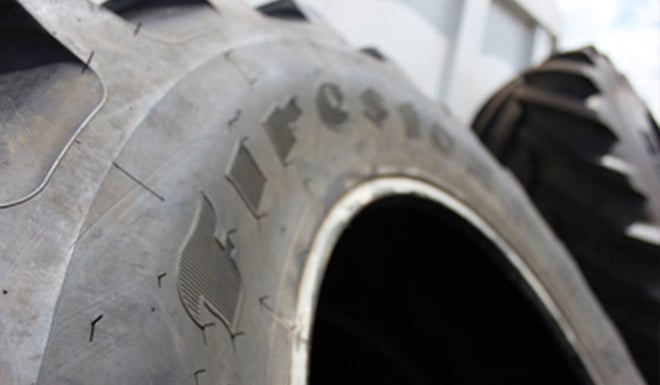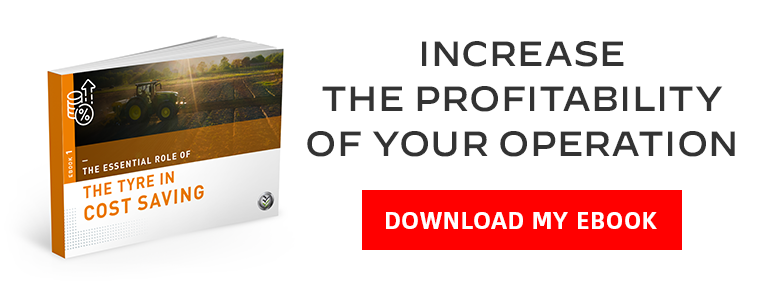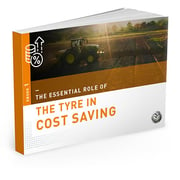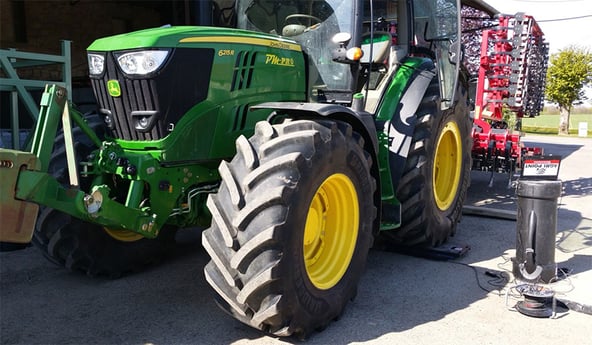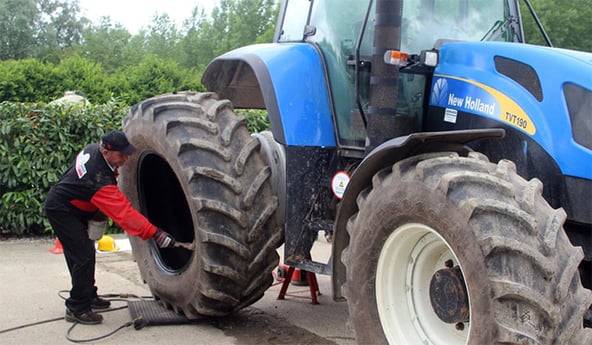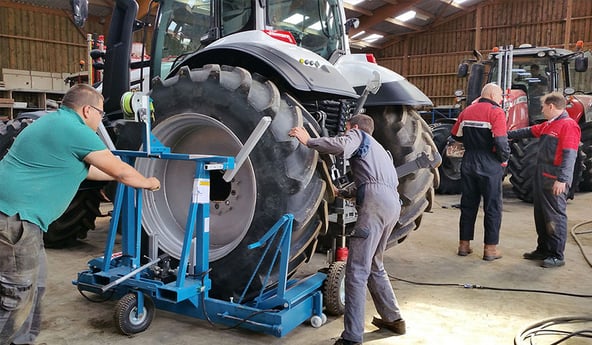What are the consequences of bad storage of your seasonal equipment’s agricultural tyres or your tractor tyres during the winter?
What might happen, for example, if you leave the tyres on a stationary machine after its last use, without modifying their pressure or position?
In this case, the mass of the tractor squashes the tyre and only the part of the sidewall closest to the ground is solicited.
As the tyre loses pressure progressively, the deformed zone will increase and the interior structure of the casing will undergo an irreversible deformation after several weeks of immobility. It will then be more fragile when work resumes which could lead to it bursting at the level of this part of the tyre when you reinflate the tyre or if there is any lateral shock. How can this problem be avoided?
Why is it better to follow agricultural tyre storage rules?
When you use your tractor or your agricultural machinery every day, your tyres undergo regular variations in inflation pressure and movement which allows them to keep their natural flexibility.
But when your equipment is stationary for a long period of time outside, it is faced with major variations in temperature between the cold night and exposure to the sun which may last for many hours during the day. Rubber, which is your agricultural tyre’s principal material, tends to age badly and hardens and cracks if it is kept in climatic conditions that are too hot or too cold.
If the vehicle is immobilised for more than several weeks, the weight of the equipment squashes the tyres and tends to flatten them, thus creating a deformation area in contact with the colder and wetter ground, which will alter the rubber and the structure of the casing on a long-term basis if the tyre loses inflation pressure slightly.
You should therefore take care to store your tyres inside, preferably out of the light and at room temperature. In addition, certain products have a direct effect on the rubber such as ozone gas which is corrosive for your tyres. You should avoid storing them next to high-voltage electrical devices which can give off ozone gas. Certain hydrocarbons and solvents also alter the tyre’s rubber.
Here are the 3 best storage possibilities for good conservation of your agricultural tyres
1. If your agricultural tyres STAY ON THE VEHICLE
As the weight of your agricultural machinery will be passed onto your tyres, ideally you should place the machine on wheel chocks and deflate the tyres slightly to free them from the excess weight while they are immobile.
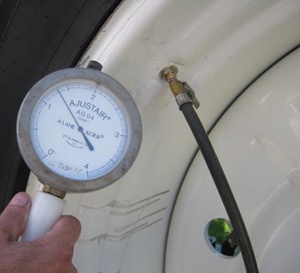
For large harvesting machines for example, as it is not possible or too complicated to place them on chocks, you should relieve the machine of as much weight as possible and increase the tyre pressure by 0.5 bar compared to the pressure at which the tyres are used, and in this precise case, you should take the time to turn the wheel one quarter of a rotation at least every month.
2. If the agricultural tyres STAY ON THE RIMS but not on the tractor
Without the weight of the machine, a tyre on its rim will keep its structural resistance without bearing any weight constraint.
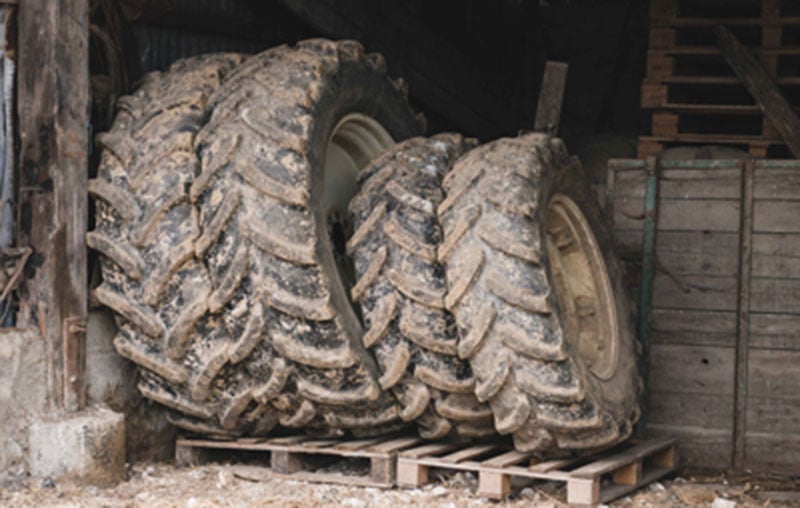
The wheels can be stored upright or flat, but above all not in contact with the floor on a pallet or a specific support surface with the tyres inflated to the pressure at which they are used.
They can be kept in piles with their wheel rims, they will conserve their resistance but be careful not to pile them up too high so as not to put too much pressure on the tyre on the bottom of the pile. The latter must always be completely flat, placed on a perfectly flat surface.
You can also hang the tyres by the centre of the rim making sure that the tread does not come into contact with any other element.
3. If the agricultural tyres are TAKEN OFF THE RIMS
The tyres are designed to be flexible and are therefore not very sturdy when removed from their rims. You must therefore be very careful in this case to avoid any deformation by storing them correctly:
- They must not be in contact with the floor, but you should avoid hanging them because the lack of structural solidity will lead to an irreversible deformation. The weight of the tyre will have a tendency to deform it and create a weakness in the casing at the place where it is hung.
- They must not be piled up either because without a rim, the tyres at the bottom of the pile will bear the weight of the entire pile and will become unusable.
The best solution is to store your tyres without rims standing (vertically) on a pallet or any system that keeps them off the floor. You should rotate them one quarter of a turn regularly if they are stored for long periods.
The Bridgestone-agriculture.eu blog is written and administered by tractor tyre experts who are available to provide you with the advice you need on the subject of your agricultural tyres. They allow you to maximise your productivity with information on all subjects linked to tyres: technical data for agricultural tyres - agricultural tyre performance - air pressure advice - solutions to avoid soil compaction - sprayer tyre pressure – why and how to ballast your tractor tyres - The 6 principal mechanical causes of abnormal wear to your tractor tyres – etc.
To take it a step further and increase the profitability of your farm, here is an ebook, downloadable for free, which explains the essential role of your tyres in the optimisation of your productivity.
Most people who read this article have also read some of the following articles:
- 5 essential techniques to optimise your agricultural tyres
- Info to help you know your agricultural tyres better and make savings
- Do you know how to read all of the indications on your tractor tyres?
- All the secrets of tractor tyres, agricultural tyres or farm tyres
- Understanding the manufacturer’s technical information on agricultural tyres
This information is intended only to make you aware of the technical and functional aspects of agricultural tires and their use. It does not allow you to make a judgment or a definitive conclusion on a given problem. Only your agricultural tire expert is able to make a technical assessment and take a final decision, case by case.
Leave a
commentary
Your email address will not be published.
Required fields are indicated with *


